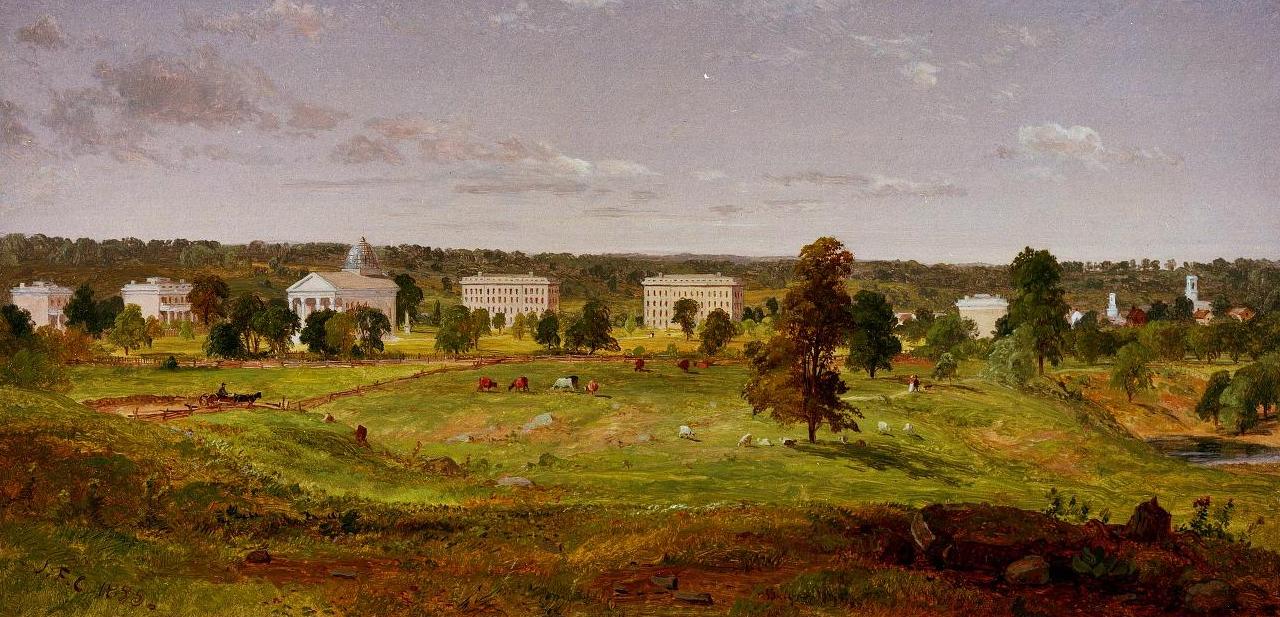The University of North Carolina at Chapel Hill is going to “solve the world’s greatest problems.” At least, that’s what its mission statement says. For a school that was originally established to serve the people of the state of North Carolina, that’s a big lift—and a significant departure from its original mission.
The 1789 charter of UNC-Chapel Hill (arguably the oldest public university in the nation) explicitly ties higher education to preparing the “rising generation” for “an honourable discharge of the social duties of life,” a striking contrast to today’s global, prestige-driven rhetoric. The founding documents of the University of Georgia (another contender for the title of oldest public university) emphasize the need for a homegrown university, calling it “too humiliating” to “send [students] abroad to other countries for their education.”
Today such universities have broadened their focus. What was once local and then national is now international. The University of Michigan’s stated mission, for example, is to “serve the people of Michigan and the world.” The Ohio State University includes in its statement of purpose “improv[ing] the well-being of local, state, regional, national, and global communities.”
Public universities have been following this trajectory for decades. U.S. News & World Report has been ranking universities nationally since 1983. It introduced global rankings, which focus on research and graduate education, in 2014. Even the national rankings focus unnecessarily on “peer assessments,” for which prestige matters more than value added. Many of the metrics used in both rankings are wholly irrelevant to undergraduates, who compose the vast majority of the student body at public universities.
These rankings, as well as research dollars and international enrollments, are the major drivers of university programs, hiring, and spending. But at what cost?
The obvious financial costs accrue to state taxpayers. Many public universities now aggressively recruit and admit out-of-state or international students. Too often such recruitment efforts devolve into an arms race, with neighboring states offering incentives and scholarships to lure a limited pool of students. At Ole Miss, for example, more than 50 percent of students, many of whom receive scholarships, now hail from out of state.
But as an economic development strategy, subsidizing out-of-state students is counterproductive since most students will take their degrees and skills elsewhere after graduation. Handshake reported that, “for the Class of 2025, 59% of applications, on average, have been submitted to jobs outside of the state where the candidate’s school is located.” In the end, taxpayers are left funding someone else’s workforce. In the worst-case scenario, these newly minted students leave the U.S. entirely, taking their expertise with them to competing or even hostile countries.
Costs to the university mission and community are less tangible. When prestige is foremost, incentives exist to disconnect programs and degrees from state workforce needs and shared values. The mission suffers when university boards and administrators drift from these state priorities, often ignoring legislatures and citizens.
Universities with their eyes on the horizon also fail to build within their own communities. Take the Atlantic Coast Conference, which once hosted historic rivalries and traditions. Now, with the addition of Stanford and Berkeley to the roster, most fans have fewer opportunities to even watch, let alone attend, ACC games. (To name just one example, Miami at Cal kicked off at 10:30pm eastern time last October. Good luck staying up for that one.) Sports, which once fostered community and loyalty, are now just big business. And, in focusing on the global economy, universities often lose sight of the needs of local economies.
To reverse this trend, states should recommit to in-state students and parents by capping out-of-state enrollment at public universities. Although it’s no panacea, capping out-of-state enrollment ensures responsible use of state taxpayer funds and guarantees opportunities for in-state students. Curricula should also be realigned to emphasize regional and American history and civics. Accountability mechanisms should be included. State legislatures and boards should ensure alignment with state priorities rather than global prestige metrics. And universities should reach out to work with local businesses and civic organizations.
Public universities can’t be all things to all people. They must serve the citizens and students who fund them through taxes and tuition payments. That means meeting the goals of students and citizens, not the prestige demands of U.S. News & World Report. Reconnecting universities to the needs of states and students is a path to civic renewal and restored public trust.
Image Credit: Jasper Francis Cropsey, “University of Michigan” (1855) via Wikimedia.





3 comments
Scott
As a proud graduate of a state university, I’m genuinely grateful to have had a top-tier public institution in my backyard. I also agree their first duty is to serve in-state students and the public good. That said, I push back on the idea that states are broadly “subsidizing” out-of-state or international students. In most cases, nonresidents pay substantially higher tuition than residents at public 4-years (often 2–3×), which can help keep in-state costs lower. International students also typically aren’t eligible for federal/state aid and are recruited precisely because they pay near full freight.
To me, the goal isn’t “in-state vs. everyone else,” it’s balance: guarantee access for residents, align programs with state workforce needs, and use higher-paying nonresident enrollment strategically to sustain quality, affordability, and research that benefits the state. That’s how you honor the original mission without starving the engine that makes these universities excellent.
1. https://nces.ed.gov/programs/digest/d23/tables/dt23_330.20.asp
2. https://isss.oie.gatech.edu/content/financial-assistance-international-students
Casey Spinks
To brag on my current institution a little bit: UT Austin is required by state law to have 80 percent of its students be from the state of Texas. I haven’t been on campus long, but I can already tell how much that rule shapes the campus identity, and for the better.
But I think the true solution to this problem would be to cultivate and hire *faculty* from the state. And is almost diametrically opposite of how most departments go about grad student admission and faculty hiring, unfortunately.
Christian
Isn’t UT also required by law to automatically admit the top 5% of every graduating class at Texas high schools, thereby promoting attendance by a broad cross-section of Texans and not just those from well-resourced schools in major population centers? Also a good rule.